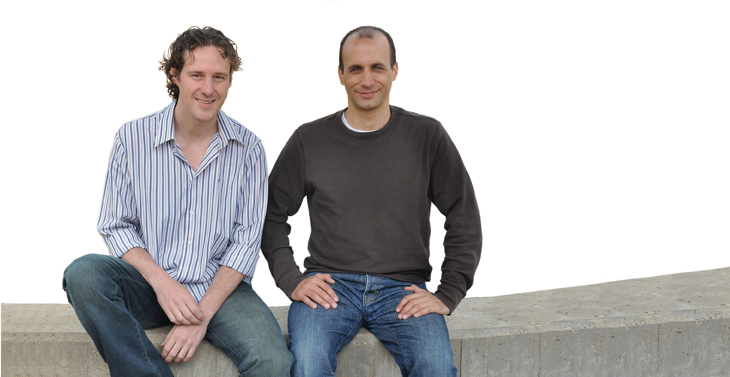A research student in physics, whose research is carried out in the Faculty of Chemistry, and focuses on systems biology, received an award this year from the Faculty of Mathematics and Computer Science

Here, in a nutshell, is an illustration of the "open borders" concept of the Weizmann Institute of Science. The research student is Rui Shlomowitz, from Prof. Nir Gov's research group from the Department of Chemical Physics in the Faculty of Chemistry, and the award he recently won is the award in memory of Prof. Lee A. Faculty in theoretical biology. Prof. Segal, who died in 2005, was a member of the Faculty of Mathematics at the Weizmann Institute of Science for many years, and was one of the first to break the boundaries between mathematics and the life sciences. His work proved that it is possible to describe the complex activities of biological systems using mathematical models, and he even taught biologists to think mathematically. "My work corresponds exactly to the approach outlined by Prof. Segal", says Shlomovitz.
Shlomowitz and Prof. Gov study the proteins that create the scaffolds that hold the cell structure - the intracellular skeleton. These proteins - called actin and myosin - create the fibers in our muscles, which contract during exercise, and they also play a role in cell movement and division. When the cell moves, the actin fibers gather on its front side, forming a kind of protrusion that drags the cell forward. During cell division, the actin and myosin fibers form a ring in the center of the cell, and contract the membrane towards the center, until it is cut in half.
What causes these proteins to push the cell membrane outward in one case, and pull it inward in the other? How do they "know" where and when to push - or pull?
To answer these questions, Shlomovitz and Prof. Gov observe the activities of these proteins in cells, and create mathematical models based on the observational data. They then examine the predictions obtained from the models by comparing them to observations made in other research groups on biological systems, such as yeast. According to their model, the actin and myosin proteins receive their "commands" according to the shape of molecules located on the cell membrane. When the cell must move, the membrane points the way forward while increasing the curvature on one side. These convex molecules "invite" the actin proteins to gather around them. As a result, large amounts of these molecules, along with actin, flock to the site, pushing the curved cell tip forward. Conversely, in the initial stages of cell division, the center of the membrane takes on a concave shape. When the scientists tested proteins derived from bacteria, they found that the concave shape also attracts the proteins: a ring of protein sits exactly on the line along which the cell was cut, marking the division line of the bacterium.
The mathematical model developed by the two uses a physical formula that describes the free energy in the system. Using the formula, they calculated the distribution of proteins in the membrane, and showed how this distribution depends on the shape of the membrane. The researchers discovered exactly how the concave section causes the proteins to surround the membrane exactly in the center of the cell, how increasing the concavity causes more proteins to be attracted to the site and thus to increase the force of compression, and how the distance between one protein and its neighbors determines whether the two will join the contracting belt or form separate rings. The model created by the scientists was not only able to predict the behavior of these proteins in convex and concave artificial membranes. A group of researchers in Taiwan discovered that the model also explains the undulating shapes of living cell membranes. Shlomowitz: "We describe complex biological processes that take place inside a single cell by developing chemical and physical models. Mathematics is the 'language' in which we analyze them."
"The theoretical models we create allow us to gain a deep understanding of the forces that underlie the patterns and processes that spontaneously form in living cells - that is, the principles of self-organization, as well as to create quantitative predictions," says Dr. Gov. "The main strength of such mathematical-physical models is
They can shed light on general principles according to which living cells behave."

One response
It is really impressive to combine so many sciences. I wonder which discipline would be interested in this research. Chemists, mathematicians and computer scientists will probably be less interested. Physicists doubt it and biologists - maybe they will be interested but it is not clear how much they will understand.
Greetings friends,
Ami Bachar